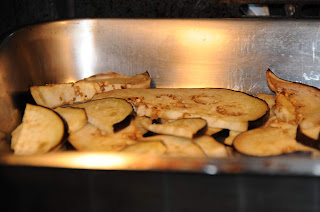Bramboracky (Czech Savory Potato Pancakes)
Prep
30 m
Cook
30 m
Ready In
1 h
Recipe By:Sonya M. Shafer
"Bramboracky (bram-bor-atch-key) are traditional pan-fried potato pancakes best accompanied by beer. This is a recipe that my Czech boyfriend and I have fun with often. Potato pancakes are commonly associated with traditional Czech, Ukrainian, Yiddish, German, Hungarian and Polish cuisines, although other cuisines (including those of India and Korea) also have similar potato pancakes."
Ingredients
4 large potatoes
3 cloves garlic, crushed
salt and black pepper to taste
1 pinch dried marjoram (optional)
2 teaspoons caraway seeds (optional)
2 eggs
1 tablespoon milk
3 tablespoons all-purpose flour
oil for frying
Directions
Peel and coarsely grate the potatoes, squeezing out as much liquid as you can. Transfer the shredded potatoes to a mixing bowl. Stir in the crushed garlic, salt, pepper, marjoram, and caraway seeds.
Beat the eggs with the milk. Add the egg mixture to the potatoes and stir well to combine. Gradually mix in the flour to form a thick but still pourable batter.
Heat the oil in a skillet over medium-high heat; the oil should be about 1/4-inch deep. Spoon about 1/4 cup of batter into the hot oil, flattening it slightly. Fry the pancake until golden brown, about 3 minutes on each side. Drain on paper towels. Taste the first pancake and adjust the seasoning if necessary; repeat with remaining batter.
Veprova Pecene (Roast Pork)
Country: The Czech Republic
Course: Main
Makes: 6 to 8 servings
Ingredients:
1 tbs vegetable oil
1 tbs prepared mustard
2 tbs caraway seeds
1 tbs garlic powder
1 tbs salt*
1 tsp freshly ground black pepper
2 lbs pork roast
1 medium onion, chopped
1/2 cup beer (or water)
1 tbs cornstarch
2 tbs butter
*Czech dishes tend to be salty, so adjust this amount according to how much salt you personally prefer.
Directions:
Make a marinade out of the oil, mustard, caraway seeds, garlic powder and salt and pepper. Rub the pork all over with this mixture and refrigerate for 45 minutes.
Preheat your oven to 325 degrees. Place the chopped onions in a layer on the bottom of the roasting pan and add the beer or water (the only beer I had was Guinness, which really isn't very Czech, so I just went with water). Now put the roast on top of the onions and cover loosely with foil.
Roast until the internal temperature reaches 145 degrees, turning once (the USDA recently declared this to be pork's new safe internal temperature, down fro a long-time standard of 160). Let rest for 10 minutes.
Transfer the juices from the roasting pan into a saucepan and add the cornstarch and butter. Simmer until thick and serve over the sliced meat.
Apple Strudel
Posted on 10.5.2014 in Bakery & Desserts
Apple strudel is traditional Czech pastry that have its origin in Austrian cuisine. It’s very popular dessert in Czech cuisine and across Central Europe thanks to history of Austro-Hungarian Empire. Apple strudel is quite easy to prepare thanks to the option of buying prepared pastry dough. However old-fashioned people still make their own dough.
Ingredients
Phyllo or flaky pastry
4-6 apples
cinnamon sugar
egg
powdered sugar
raisins, walnuts (optional)
Directions
Roll out pastry in slim rectangle.
Grate apples and put them on dough. Add raisins or chopped walnuts if you want.
Sprinkle apples with cinnamon sugar.
Roll up dough into long cylinder and close both ends.
At last brush strudel with whisked egg.
Put in preheated oven 200°C (390°F) for about 20 minutes until strudel has nice golden color.
Dust with powdered sugar. Apple strudel can be served with whipped cream.
































